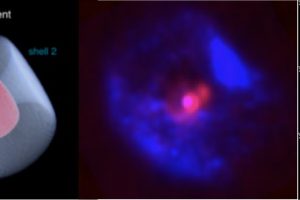X-rays and EUV radiation affect the chemistry of planetary atmospheres and the stratification of molecules such as water, CO, CO2, and hydrocarbons

Some of the 4903 exoplanets discovered and confirmed so far (https://exoplanets.nasa.gov/) orbit very close to their stars. We learnt with the very first planet discovered around a star different than the Sun (51 Pegasi b, discovered in 1995) that planets with very close orbits are possible in nature. 51 Pegasi b, in fact, orbits at about 0.05 Astronomical Units (AU,
» Read more








